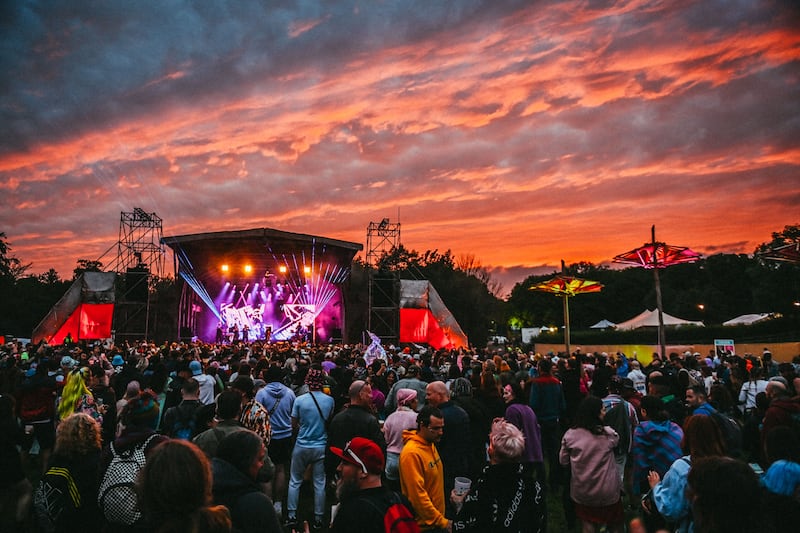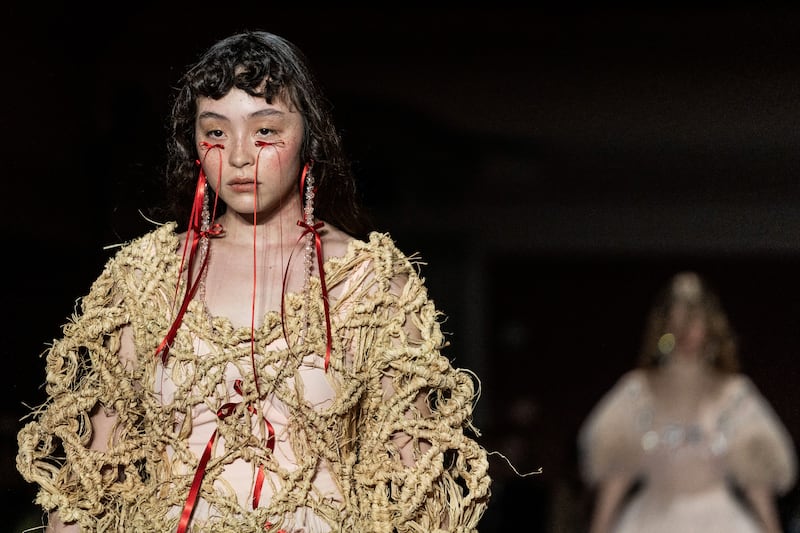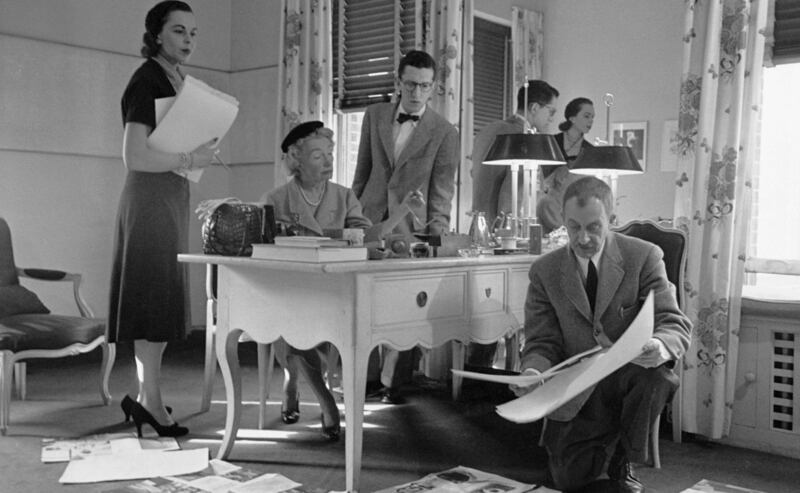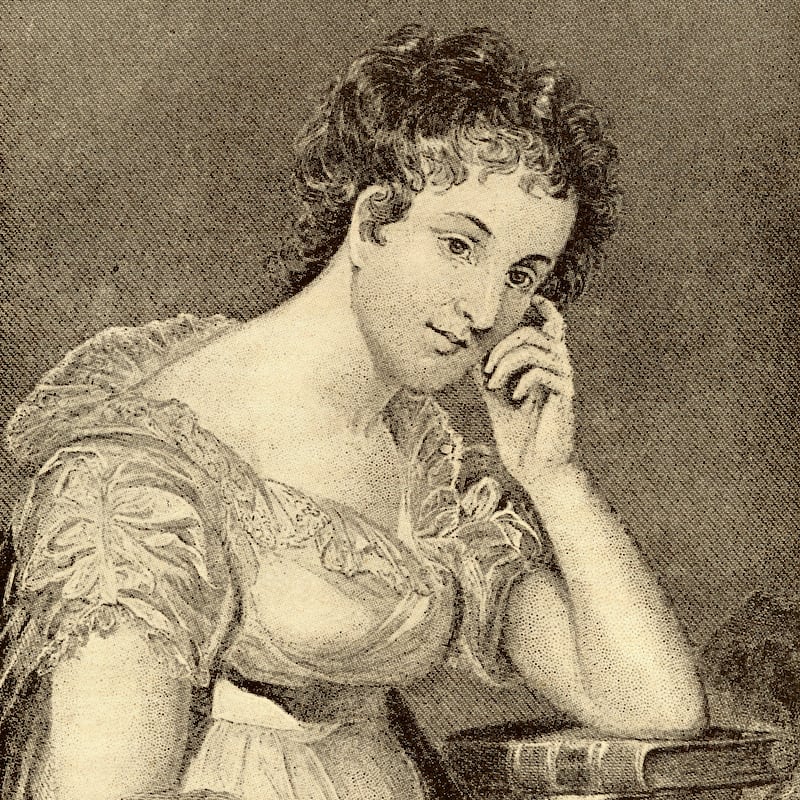International Women’s Day, on Wednesday, March 8th, is a good time to take another look at women who have made an enduring mark on Irish art and culture. Presiding over all is Bríg. A member of the Tuatha Dé Dannan, and a goddess in her own right, she is most associated with spring but was also known, even by early Christian monks, as “the goddess whom poets adored”. Credited with creating keening (see Eibhlín Dubh Ní Chonaill, below), she shares her name and even perhaps her persona with St Brigid of Kildare, mother saint of Ireland, and patron of our most recent bank holiday.
Poetry
Despite our abundance of Nobel laureates, an Irish woman has yet to win the literature prize. Frankly that’s a failing of the prize committee rather than of a lack of talent from the likes of Eiléan Ní Chuilleanáin, Paula Meehan, Eavan Boland, Máire Mhac an tSaoi and Enda Wyley, not to mention a new generation that includes Dawn Watson, Christie Kandiwa, Sarah Clancy and Felicia Olusanya, who writes and performs as Felispeaks.
Go back to the 1700s, though, to shed a tear with Eibhlín Dubh Ní Chonaill (1743-1800). Her Caoineadh Airt Uí Laoghaire, or Lament for Art Ó Laoghaire, composed after the murder of her partner, is regarded as one of the greatest poems to have emerged from Ireland or Britain at the time. It has had a broad and eclectic influence, having inspired plays and been quoted by Hunter S Thompson, the master of gonzo journalism, in his Rum Diary. New audiences came to discover and prize the poem following Doireann Ní Gríofa’s 2020 novel, A Ghost in the Throat.
Festivals
We do love a good get-together, and many a reveller has cause to raise a mindful glass of kombucha (or possibly something stronger) to Avril Stanley for dreaming up Body & Soul. Mary Hickson’s Sounds from a Safe Harbour has been ramping up the cultural craic in Cork, while Mary Nally gets people to Drop Everything every other year on Inis Oírr. Francesca La Morgia, Elena Cristofanon and Aoife Concannon set up and run Mother Tongues, which celebrates the rich diversity of languages spoken in Ireland today. In Kilkenny, Olga Barry takes good care of the annual and much-lauded arts festival, while Lorraine May looks after Cork Midsummer in fine style.

All owe a debt of thanks to Margaret O’Carroll, who died in 1451. The Offaly-born queen was described in these pages as organising “the 1440s equivalent of Electric Picnic: epic festivals of literature attended by 2,700 people” – and that was before you could get the word out on Twitter. Scholars have described her gigs as “national events of high and singular importance”. No wonder they called her Margaret the Hospitable.
Architecture
Women are a powerful presence in Irish architecture today, thanks to the brilliance of the likes of Shelley McNamara and Yvonne Farrell of the multi-award-winning Grafton Architects, McCullough Mulvin’s Valerie Mulvin, O’Donnell & Tuomey’s Sheila O’Donnell, and Róisín Heneghan of Heneghan Peng. A new generation, including Rae Moore, Alice Clancy and Jennifer O’Donnell, are broadening the definition of architectural practice.

Going further back, Wexford-born Eileen Gray (1878-1976) was a pioneer of modernism despite having no formal training. Gray’s E-1027 pavilion of a house in the south of France is considered a masterpiece, and has become a place of pilgrimage for lovers of smooth straight lines and lots of concrete. But do not think Gray was a champion of the more soulless “machine for living” brand of modernism. “Modern designers have exaggerated the technological side,” she wrote in 1929, just as the house was being completed. “Intimacy is gone, atmosphere is gone,” she continued. “Formulas are nothing. Life is everything. And life is mind and heart at the same time.”


Less well known is Florence Fulton Hobson (1881-1978). Born in Monasterevin, in Co Kildare, Hobson grew up in Belfast and became only the third woman to be licenced by the Royal Institute of British Architects, and the first professional woman architect in Ireland. She worked for Belfast Corporation, focusing on housing and health. In a 1911 article, she describes negotiating her role as the only woman in her profession, while her autobiography opens with the line “This is not a success story…”, strongly implying that the male-dominated structures she encountered held her back from her goals. Her work, however, helped pave the way for all the successful women architects to come.
Dance
Dance in Ireland goes way beyond Irish dancing, although we do have to give a nod to Jean Butler, despite her having been born in New York. Headlining the original Riverdance alongside Michael Flatley, Butler is also notable for having the good taste not to segue into a career in bad films (thank you, Blackbird), although she did act in the 1998 film The Brylcreem Boys alongside Gabriel Byrne. Another American, Virginia-born Morgan Bullock, became the first Black Irish dancer to feature in Riverdance, having been “discovered” when her TikTok dance went viral in 2020. It seems reasonable to claim her here, as in 2022 she was awarded the Presidential Distinguished Service Award for the Irish Abroad. If it’s good enough for Michael D…
[ Morgan Bullock: ‘I watched Riverdance and never saw somebody who looked like me’Opens in new window ]
The Dubliner Monica Loughman became the first western ballet dancer to become a soloist with Russia’s Perm State Theatre of Opera and Ballet, back when it was still okay to go to see Russian ballet. She now teaches dance. On the contemporary side, Liz Roche’s incredible choreography has brought her dance company around the world, including to New York, Beijing and Brisbane.

But blazing the trail was Edris Stannus (1898-2001). Wicklow-born Stannus must have known she was destined for great things when she changed her name to Ninette de Valois. She joined Sergei Diaghilev’s ground-breaking Ballets Russes, set up a ballet school at the Abbey Theatre in Dublin on the invitation of WB Yeats, and established London’s world-famous Royal Ballet. (The photograph at the top of this article shows her there in 1960.) She was lead dancer and choreographer at Sadler’s Wells, and also established the first ballet school in Turkey. She died at the age of 102, after remaining in close contact with Ireland throughout her life. In 1985 she wrote in a letter to this newspaper, in support of a friend whose funding had been cut by the Arts Council, that “one woman’s intelligent effort should not be forgotten or underwritten”.
[ Dame Ninette De Valois, the Wicklow woman who brought ballet to BritainOpens in new window ]
Fashion
Fashion is one area in which women have historically had more of a look-in. Today’s leading designers, such as Louise Kennedy, Joanne Hynes, Helen Cody and Simone Rocha, have built international careers on foundations laid in Ireland by the likes of Irene Gilbert (1910-1985) and Sybil Connolly (1921-1998). Gilbert designed for royalty and was famous for her friendship with, and work for, Grace Kelly. Her shop on St Stephen’s Green in Dublin made her the first woman to run a successful fashion business in Ireland. Connolly is credited with putting Irish fashion on the map with her use of Irish linen, wool and Carrickmacross lace. Jackie Kennedy was a fan, as was Taoiseach Jack Lynch, who described her as a national treasure.


But Connolly in turn owes a debt of gratitude to Dalkey-born Carmel Snow (1887-1961), who as fashion editor at Vogue, and later editor-in-chief of the American edition of Harper’s Bazaar, launched and promoted the careers of photographers, models, editors, writers and designers, including Connolly. She coined the term “New Look” for Christian Dior in 1947, and discovered Diana Vreeland dancing across a crowded room. When asked why her name is not more famous, the photographer Richard Avedon said “she died before stardom was the thing”.

International Women’s Day: Celebrating 50 years of Irish Feminism
Literature
In a very crowded field, so many literary talents still come shining through. Edna O’Brien, Maeve Binchy, Marian Keyes and Iris Murdoch have written themselves into enduringly beloved status. Emma Dabiri got everyone thinking with her debut book, Don’t Touch My Hair, while Sally Rooney has taken the world by storm (thanks in part to Lenny Abrahamson’s directing of Daisy Edgar-Jones’ winsome pout and Paul Mescal’s GAA strip in the TV adaptation of Rooney’s Normal People).

Skip further back in time to Edith Somerville (1858-1949) and Violet Florence Martin (1862-1915), who lived and wrote together in Co Cork as Somerville and Ross. Most famous for the Irish RM books, Martin was a committed suffragette; Somerville is also notable for having brought the first Friesian cattle to Ireland. Then steel yourself for Peig. Peig Sayers (1873-1958) may be poorly taught in Irish schools, but her eponymous autobiography is actually an extraordinary record of a then-disappearing way of life. Sayers also dictated 350 legends, folk and ghost stories to the Irish Folklore Commission, helping to preserve their rich tradition.

[ Marian Keyes: How I brought my dad back from the dead (sort of)Opens in new window ]
Preceding them all comes Maria Edgeworth (1768-1849). Now overshadowed by the likes of Jane Austen, who declared herself an admirer, Edgeworth was a prolific writer, most remembered today for Castle Rackrent. Castle Rackrent is often credited as the first historical novel, the first big house novel, and the first saga novel – which is a good thing or a bad thing, depending on your literary proclivities. WB Yeats declared it “one of the most inspired chronicles written in English”, while Sir Walter Scott credited it as the inspiration for his Waverley series of novels.

Artists
As with literature, Irish women artists have always been trailblazers. Today’s leading lights include Dorothy Cross, Alice Maher, Eilís O’Connell, Joy Gerrard and Patricia Hurl (whose work is currently on show at the Irish Museum of Modern Art). Niamh O’Malley represented Ireland at last year’s Venice Biennale with Gather, now on at the Temple Bar Gallery. Other Irish Venice alumni include Jessie Jones, Grace Weir, Sarah Browne (with Kennedy Browne) and Eva Rothschild.

The first artists to represent Ireland at Venice (which is also known as the Olympics of the art world) were Nano Reid (1900-1981) and Norah McGuinness (1901-1980). In 1950, Britain showed John Constable (though, to be fair, the Brits were juxtaposing his work with the sculptures of Barbara Hepworth) and the US pavilion was populated by Jackson Pollocks. Hone and McGuinness more than held their own, the president of Italy being impressed enough to purchase McGuinness’s painting The Black Church.

And before Reid and McGuinness came Mainie Jellett (1897-1944), Evie Hone (1894-1955) and Mary Swanzy (1882-1978). Jellett and Hone were instrumental in bringing cubism to Ireland, having travelled to Paris to spend time learning from the source. One of Ireland’s first abstract painters, Swanzy had a restless nature that led her to travel the world, experimenting with styles from cubism to futurism to fauvism, enriching the eyes of Irish audiences as she went.

Irish women have had a history of being overshadowed by the stories and works of men, not because of a talent deficit but because of a distinct and conscious bias. Augusta Gregory (1852-1932) is often seen as a society hostess and artistic facilitator of WB Yeats rather than as a dramatist and folklorist in her own right. Enniskerry’s Ina Boyle (1889-1967) wrote powerful and moving music that was largely ignored until recently. In 1937 Ralph Vaughan Williams wrote to encourage her: “I think it is most courageous of you to go on with so little recognition. The only thing to say is that it does come finally.”
International Women’s Day offers the opportunity to remind ourselves of the richness that has frequently been missed, and to remember that recognition hasn’t historically always been awarded on merit. Time for change, finally.





















